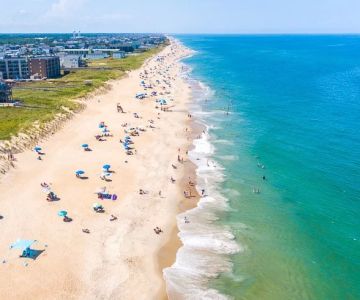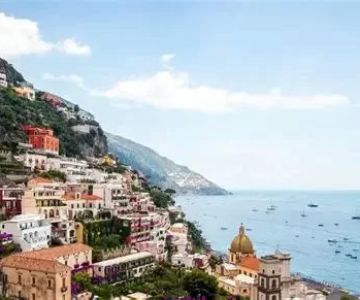How to Plan a Trip to a US UNESCO World Heritage Site
1. Understanding the Significance of US UNESCO World Heritage Sites
Planning a trip to a US UNESCO World Heritage Site is not just about sightseeing—it’s about connecting with some of the most culturally and naturally significant places in the world. From the breathtaking Grand Canyon to the historic heart of Independence Hall in Philadelphia, these sites tell the story of humanity and nature in harmony. Whether you’re a history enthusiast, nature lover, or cultural explorer, visiting one of these locations can be a deeply rewarding experience.
There are currently over 20 UNESCO World Heritage Sites in the United States, recognized for their universal value and contribution to the world’s heritage. Each site offers something unique—Yellowstone National Park captivates with its geothermal wonders, while the Statue of Liberty stands as a symbol of freedom and hope. Before you begin your journey, it’s important to understand why these places matter and how to visit them responsibly.
2. Choosing the Right UNESCO Destination
When deciding which UNESCO World Heritage Site to visit in the US, think about what kind of experience you want. Do you want to explore natural landscapes, dive into history, or immerse yourself in cultural traditions? Here are a few examples to inspire your decision:
- - For nature lovers: Yellowstone National Park, Everglades National Park, and Great Smoky Mountains National Park are ideal destinations offering unparalleled biodiversity and scenic beauty.
- - For history buffs: Mesa Verde, Independence Hall, and Cahokia Mounds provide a fascinating glimpse into early civilizations and America’s founding history.
- - For cultural explorers: The Pueblo de Taos in New Mexico and the San Antonio Missions in Texas allow visitors to experience living heritage and vibrant local traditions.
Once you’ve selected your destination, research the best times to visit. For example, national parks like Yellowstone are best enjoyed in late spring or early fall, when the weather is mild and crowds are smaller. Historical sites, on the other hand, may be ideal for year-round visits, depending on local events and guided tours available.
3. Planning Your Travel Logistics
Successful travel to a US UNESCO World Heritage Site requires thoughtful planning. Start by identifying the closest airports, transportation routes, and accommodations. Many UNESCO sites are located in remote or protected areas, so accessibility can vary. For instance, getting to Yosemite National Park may involve a scenic drive through mountain passes, while visiting Hawaii Volcanoes National Park requires a flight to the Big Island.
3.1. Accommodation and Permits
Depending on your destination, you may need to book accommodations months in advance, especially for popular parks and landmarks. Some sites, like Glacier National Park, have limited lodging inside the park, so nearby towns may be your best option. Additionally, certain locations require entry permits or timed tickets, particularly during peak travel seasons. Always check official park websites for the latest information before your trip.
3.2. Transportation Options
Consider renting a car if your chosen site covers a large area or lacks public transportation. Driving allows you the flexibility to explore at your own pace and discover hidden gems along the way. For more urban sites, public transit, walking tours, or guided buses are often excellent ways to immerse yourself in the local experience.
4. Preparing for an Immersive Experience
One of the best parts of visiting a US UNESCO World Heritage Site is the opportunity to engage with its story. Before your trip, take time to learn about the site’s history, culture, and ecological importance. Reading about Indigenous communities connected to the land, early explorers, or unique wildlife will deepen your appreciation for what you see.
For example, if you’re visiting Mesa Verde, understanding the ancestral Pueblo people’s history makes exploring the cliff dwellings far more meaningful. Similarly, learning about the delicate ecosystems of Everglades National Park can inspire a sense of responsibility toward conservation.
4.1. Respecting the Site
These destinations are globally recognized for their value, so it’s crucial to travel responsibly. Follow all visitor guidelines, stay on marked trails, and avoid touching artifacts or disturbing wildlife. Leave no trace—take only photos and memories. Supporting local communities through sustainable tourism practices also helps preserve these places for future generations.
5. Making the Most of Your Visit
While planning is essential, leave room for spontaneity. Many travelers find that the most memorable moments happen unexpectedly—a quiet sunrise over the Grand Canyon, a conversation with a park ranger, or stumbling upon a hidden waterfall. Take your time to slow down and experience the site fully rather than rushing through checklists.
If you’re visiting multiple UNESCO sites in one trip, consider mapping out a road trip route that connects them. For example, you could explore the Southwest’s natural wonders—from Carlsbad Caverns in New Mexico to the Grand Canyon in Arizona—each showcasing a different aspect of the country’s rich heritage.
6. Tips from Travelers: Real Stories from the Road
One traveler, Sarah from Seattle, recalls her visit to Yellowstone as a life-changing experience. “Seeing Old Faithful erupt in person was breathtaking,” she says. “But what I’ll never forget is hiking through Lamar Valley at dawn and watching a herd of bison move across the misty plains—it felt like stepping back in time.”
Another visitor, Marcus from Boston, found unexpected beauty in the historic architecture of San Antonio Missions. “It wasn’t just the churches themselves—it was the people, the music, the sense of living history that made it unforgettable,” he explains. Stories like these highlight how visiting US UNESCO World Heritage Sites isn’t just about sightseeing—it’s about connection and discovery.
7. Extending Your Journey Beyond the Sites
Many UNESCO World Heritage Sites are located near other incredible attractions worth exploring. For instance, a trip to the Statue of Liberty can be paired with exploring New York’s cultural districts, while a visit to Hawaii Volcanoes National Park can include snorkeling in Kona’s coral reefs. Expanding your itinerary adds richness and variety to your journey.
For travelers seeking tailored recommendations, visit Refined Travel to explore curated guides, travel services, and exclusive insights that help you plan the perfect UNESCO-inspired vacation. Whether you’re looking for luxury accommodations, eco-friendly adventures, or off-the-beaten-path experiences, the team at Refined Travel can help you design a journey that’s as meaningful as it is memorable.
8. A Journey of Discovery
Exploring a US UNESCO World Heritage Site is more than just a trip—it’s a journey through history, culture, and nature that leaves a lasting impact. Each site tells a story about who we are and the world we share. With the right planning, respect, and curiosity, your adventure can be both educational and transformative.
Ready to start planning your heritage adventure? Discover the best routes, expert travel advice, and exclusive destination guides with Refined Travel and begin your journey to one of America’s most extraordinary places today.







 Gauley River Wild & Woolly Primitive Campground4.0 (22 reviews)
Gauley River Wild & Woolly Primitive Campground4.0 (22 reviews) Castle Oaks RV Park4.0 (46 reviews)
Castle Oaks RV Park4.0 (46 reviews) DUMONT LAKE FAMILY CAMPGROUND4.0 (219 reviews)
DUMONT LAKE FAMILY CAMPGROUND4.0 (219 reviews) Midway Mobile Home & RV Park3.0 (53 reviews)
Midway Mobile Home & RV Park3.0 (53 reviews) Floyd Road Mobile Home Park0.0 (0 reviews)
Floyd Road Mobile Home Park0.0 (0 reviews) Asheville Bear Creek RV Park3.0 (539 reviews)
Asheville Bear Creek RV Park3.0 (539 reviews) Exclusive Travel Packages for First-Class Travelers: A Guide to Luxury Vacations
Exclusive Travel Packages for First-Class Travelers: A Guide to Luxury Vacations Refined Travel Experiences in Southeast Asia: Explore Luxury & Unique Destinations
Refined Travel Experiences in Southeast Asia: Explore Luxury & Unique Destinations How to Make the Most of Luxury Vacation Deals: Expert Tips for Savvy Travelers
How to Make the Most of Luxury Vacation Deals: Expert Tips for Savvy Travelers How to Enjoy a Refined Travel Experience in the Mountains
How to Enjoy a Refined Travel Experience in the Mountains Refined Travel Itineraries for Art and Culture Lovers: Explore the World of Art and History
Refined Travel Itineraries for Art and Culture Lovers: Explore the World of Art and History Most Luxurious Destinations for Honeymooners: Top Spots for Romance and Luxury
Most Luxurious Destinations for Honeymooners: Top Spots for Romance and Luxury